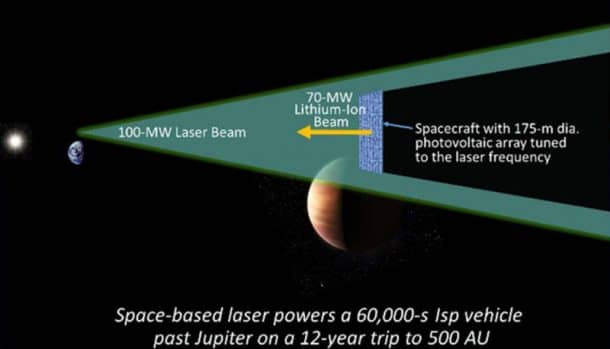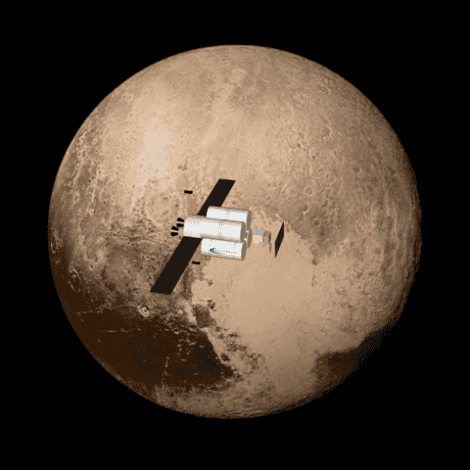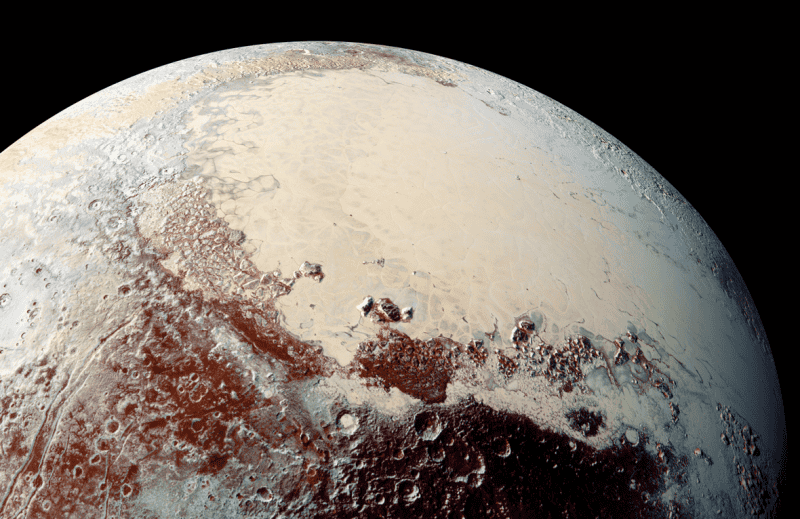Heartened by Trump’s anti-science shenanigans finally giving in two weeks back, NASA has just released a list of 22 new projects as a part of its Innovative Advanced Concepts (NIAC) program. The exciting list of projects ranges from a solar powered Venusian weather balloon to a planet hopping laser-driven sail, and even an autonomous rover on Pluto. It means that the space exploration is about to go to a whole new level!
Any proposed project has to go through two phases of attrition. The projects, which pass the Phase I, receive a funding of $125,000, and a time of nine months to refine their designs and implementation strategy. Then after nine months, a peer review process again assesses these proposals, with a handful feasible and beneficial projects going through to the Phase II. Phase II teams receive around $500,000 to materialize the project within two years.
Boeing’s Proposed Deep Space Explorer Will Enable Us To Go To Mars
NASA has announced 15 new Phase I concepts and seven new Phase II concepts this year. This includes not one, but two Phase I projects that are based on interstellar space traveling. One of these consists of building an orbiting 100-megawatt laser array that is six miles (10 km) wide. It would be able to convert its humongous laser power into electrical energy, enabling long-distance travel of a conventionally-sized spacecraft.

The project description reads,
“We propose a new power/propulsion architecture to enable missions such as a 12-year flight time to 500 AU (where 1 AU equals the average distance of the Earth to the Sun) with a conventional (i.e., New Horizons sized) spacecraft,” explains Brophy at his project page. “This architecture would also enable orbiter missions to Pluto with the same sized spacecraft in just 3.6 years. Significantly, this same architecture could deliver an 80-metric-ton payload to Jupiter orbit in one year, opening the possibility of human missions to Jupiter.”
Another exciting project in the list includes the detoxification of Martian soil to make it fit for the agriculture via a plan called “Solar Surfing.” It will use Moon Probes driven by light spacecraft to execute the plan.
A remarkable Phase II plan included a fusion-enabled Pluto orbiter that uses one of its kind Direct Fusion Drive (DFD), allowing the spacecraft to travel to Pluto along with an orbiter and a lander. The plan suggests that the craft can reach Pluto in just four to five years, a journey that took New Horizons almost ten years to complete.

The plan narrates,
“Since DFD provides power as well as propulsion in one integrated device, it will also provide as much as 2 MW of power to the payloads upon arrival,” says Thomas at her NASA project page. “This enables high-bandwidth communication, powering of the lander from orbit, and radically expanded options for instrument design.” She added: “The data acquired by New Horizons’ recent Pluto flyby is just a tiny fraction of the scientific data that could be generated from an orbiter and lander.”
This Is How Oxygen Is Transported To The International Space Station
Here are all the projects approved by NASA.
The selected 2017 Phase I proposals:
-
A Synthetic Biology Architecture to Detoxify and Enrich Mars Soil for Agriculture, Adam Arkin, University of California, Berkeley
-
A Breakthrough Propulsion Architecture for Interstellar Precursor Missions, John Brophy, NASA’s Jet Propulsion Laboratory (JPL) in Pasadena, California
-
Evacuated Airship for Mars Missions, John-Paul Clarke, Georgia Institute of Technology in Atlanta
-
Mach Effects for In Space Propulsion: Interstellar Mission, Heidi Fearn, Space Studies Institute in Mojave, California
-
Pluto Hop, Skip, and Jump, Benjamin Goldman, Global Aerospace Corporation in Irwindale, California
-
Turbolift, Jason Gruber, Innovative Medical Solutions Group in Tampa, Florida
-
Phobos L1 Operational Tether Experiment, Kevin Kempton, NASA’s Langley Research Center in Hampton, Virginia
-
Gradient Field Imploding Liner Fusion Propulsion System, Michael LaPointe, NASA’s Marshall Space Flight Center in Huntsville, Alabama
-
Massively Expanded NEA Accessibility via Microwave-Sintered Aerobrakes, John Lewis, Deep Space Industries, Inc., in Moffett Field, California
-
Dismantling Rubble Pile Asteroids with Area-of-Effect Soft-bots, Jay McMahon, University of Colorado, Boulder
-
Continuous Electrode Inertial Electrostatic Confinement Fusion, Raymond Sedwick, University of Maryland, College Park
-
Sutter: Breakthrough Telescope Innovation for Asteroid Survey Missions to Start a Gold Rush in Space, Joel Sercel, TransAstra in Lake View Terrace, California
-
Direct Multipixel Imaging and Spectroscopy of an Exoplanet with a Solar Gravity Lens Mission, Slava Turyshev, JPL
-
Solar Surfing, Robert Youngquist, NASA’s Kennedy Space Center in Florida
-
A Direct Probe of Dark Energy Interactions with a Solar System Laboratory, Nan Yu, JPL
The selected 2017 Phase II proposals:
-
Venus Interior Probe Using In-situ Power and Propulsion, Ratnakumar Bugga, JPL
-
Remote Laser Evaporative Molecular Absorption Spectroscopy Sensor System, Gary Hughes, California Polytechnic State University in San Luis Obispo
-
Brane Craft Phase II, Siegfried Janson, The Aerospace Corporation in El Segundo, California
-
Stellar Echo Imaging of Exoplanets, Chris Mann, Nanohmics, Inc., Austin, Texas
-
Automaton Rover for Extreme Environments, Jonathan Sauder, JPL
-
Optical Mining of Asteroids, Moons, and Planets to Enable Sustainable Human Exploration and Space Industrialization, Joel Sercel, TransAstra Corp.
-
Fusion-Enabled Pluto Orbiter and Lander, Stephanie Thomas, Princeton Satellite Systems, Inc., Plainsboro, New Jersey


